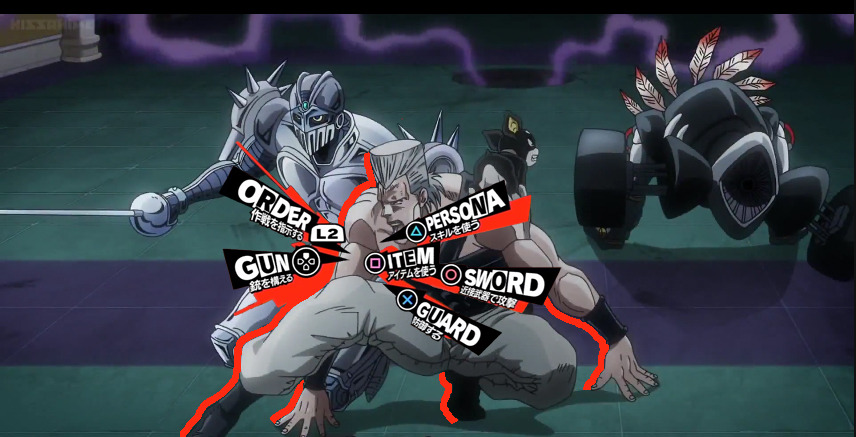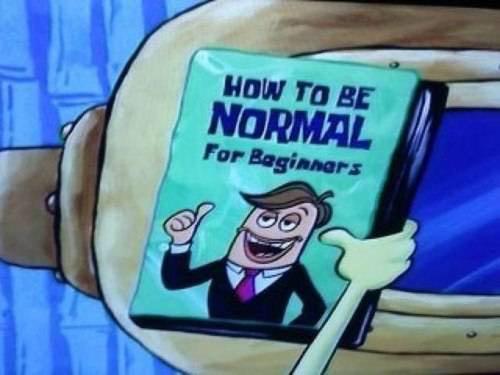Persona 5: First Impressions
We’ve been waiting and waiting, and here it finally is: Persona 5.
You might recall a few articles where we talked about Persona 5 – you can find them here and here. And if you couldn’t tell, we’ve been patiently waiting for this game to arrive. Now that it’s here though, it’s time to set it under the microscope of scrutiny. Shigeru Miyamoto of Nintendo said that: “A delayed game is eventually good, but a rushed game is forever bad”. Well, we’ll see if that holds true with Persona 5.
Since this is a first impressions look at Persona 5, we won’t be mentioning anything beyond the first Palace or main dungeon. What we’ve chosen to focus on is its gameplay, music, and how the beginning of Persona 5 builds on the game’s story and theme.
Is the game worth all the delays? Let’s find out.

Gameplay.
Let’s get this out of the way: Yes, Persona 5 is still a traditional JRPG.
If you don’t like long dialogues, especially at the start of the game, you’ll probably be annoyed. After the intro sequence, you’re thrown into the usual start of every Persona since 3: you move into a new neighborhood, you’re introduced to new surroundings, new people, and all that jazz.
A lot of talking ensues.
Persona 5 makes this less annoying, since it does give you a taste of the battle mechanics early on. It also lets you freely control your character during the commute to your new home and your new school.

Persona 5‘s gameplay is still reminiscent of Persona 3 and Persona 4‘s mechanics: part-time student, part-time ass-kicker. You spend part of your time living as a normal student: study, forge friendships, take on part-time jobs, etc. The other part is spent dungeon crawling, fighting shadows, and other baddies. As usual, these two aspects of Persona 5‘s gameplay affect each other in a significant way.
The Whims of Fate
Doing well in school and enhancing social stats improve your relationships. This in turn fuels your Persona fire power. Doing jobs gives you extra funds for dungeon crawling and sometimes increases social stats. Make sure to find a healthy balance of both.
What’s more, like every Persona after 3, you operate on limited time. You have only enough activities per day, hence the importance of striking a balance between dungeon crawling and everyday life. For example: you can’t do any activity for the rest of the day if you’ve committed to dungeon crawling. So yeah, prepare and plan accordingly.
While we did say that Persona 5 is essentially like every Persona after 3, some aspects of the gameplay bring back the first three games – Persona, Persona 2: Innocent Sin, and Persona 2: Eternal Punishment.
The first notable thing is the negotiation mechanic. Unlike 3 and 4, you have to talk to the shadows in order to obtain new Personas. After a successful knockdown, players are given the chance to negotiate for one of three things: money, items, or a new ally. If you want to recruit a new Persona for your arsenal, you’ll need to select the correct response to match up with the individual personalities of your foes. We honestly prefer this mechanic, as it’s a more engaging way of obtaining new Personas, instead of “Your mind’s eye sees cards. GRAB DA CARDS.”

They also brought back gun-wielding, which is essentially a secondary attack with the attribute ‘Gun’. This is different from regular ‘Phys’ attacks. This can be used to target enemies who are weak to the ‘Gun’ attribute for a knock down. Another element – ‘Nuke’ was also brought back, along with a new element called ‘Psy’. The insta-kill Hama and Mudo skills are now accompanied by damage dealing skills Kouha and Eiha which belong to the ‘Bless’ and ‘Curse’ elements, respectively.
Power Intuition
Aside from bringing old gameplay elements back, they’ve also introduced new elements such as hiding. Your player can now hide behind corners and objects while dungeon crawling in order to get a jump on enemies and get that sweet first strike.
This mechanic is a bit janky to be honest. As long as you’re hidden, an enemy can’t see you even if they’re literally looking at you which is immersion breaking. Think level 100 sneak in Skyrim. We understand that it’s their first time applying this to a Persona game so it can be forgiven. Not to mention the sneak ability fits the Phantom Thief motif very well.
There have also been slight tweaks to battle mechanics. Each status ailment adds a ‘technical’ weakness to an enemy. For example: an enemy under the burn status will be weak to Wind spells, while enemies affected by mental ailments such as ‘brainwash’ and ‘fear’ will be vulnerable to Psy spells. This adds a level of depth to the gameplay and is especially evident when you’re playing on Merciless difficulty – the hardest difficulty – and you need to utilize all your tools to get by.
You will also be able to do baton passes to your teammates when you knock enemies down. Baton passes will pass a turn to a teammate with an added buff to attacks and recovery spells.
Into the Metaverse
Another new addition is the revamped Confidant mechanics, also known as the Social Link mechanics for the veteran Persona players out there. No, they didn’t just change the name. Unlike previous titles in the series, leveling up Confidant ranks will now give added benefits apart from the added EXP when fusing Personas. These benefits include making SP recovery items, abilities on the battle field, abilities which allow you to do more in a day, etc.
It’s a welcome change to the social link mechanic as it gives you more reason to do them other than waifu/husbando reasons. It also gives you that feeling that your friends really are supporting you though they are not part of the main Phantom Thieves gang.

Now, ever since the first PV was released, we’ve been super hyped by the UI – and it is as gorgeous as we thought it would be.
Aesthetically, the UI fits in organically with the whole visual theme of Persona 5 and achieves a stylish, but not overbearing feel to the menus. The smooth dynamic transitions from menu to menu makes you want to pay attention and appreciate the amount of thought that went into designing and animating each of them. We have to say, it’s the first time we’ve ever paid this much attention to menu screens.

Character portraits on the Confidant menu have this sleek black and white theme that really gives it this noir, murder-mystery, crime-thriller feel to it; again, fitting very nicely to the overall aesthetic.
Lastly, the battle UI is innovative and removes needless scrolling through a bunch of options. By mapping it to the various buttons on the controller, it makes efficient use of all the face buttons.

Music.
Shoji Meguro is back once again as the musical director of the game. In addition to the (predominantly) acid jazz/blues/rock motifs that adorn the musical score, lead singer Lyn adds a soulful force behind some of Persona 5’s most memorable tunes. Whether it’s a driving, energetic battle theme, or a more somber, introspective tune for a rainy day, Lyn does a fantastic job in whatever song she appears in.
In terms of instrumentation, the brass instruments from Persona 4 take a backseat to electric piano, organs, and string instruments in Persona 5. This is a welcome change, in our opinion. Naturally, the presence of bright-sounding instruments would have clashed with the general vibe of Persona 5, which is often darker, moodier, and more serious in relation to previous entries in the franchise.
As a result, Meguro’s choice of instrumentation gives us a slew of tunes that not only sound great, but also don’t get tiring to listen to. In terms of battle themes, we would much rather listen to Persona 5‘s “Last Surprise” than Persona 4‘s “Reach Out to the Truth”. The latter honestly got somewhat annoying after the 100th time or so.
Overall, Meguro does an excellent job at producing a mature soundtrack for a mature Persona game.

Story and Theme.
Persona 5 explores a lot of dark subjects. This includes physical, verbal, and sexual abuse; suicide, corruption, oppression, and injustice. These issues are explored in Persona 5‘s theme of breaking free from powers of oppression.
The game follows a team of youths – the Phantom Thieves – who have been deemed social outcasts in some way. They fight against abusive, corrupt individuals by going into a cognitive world where they find physical manifestations of corrupted desires. The psyches of people with strong enough distortions manifest as Palaces. The Phantom Thieves can trigger a change of heart in these corrupt individuals by stealing their ‘Treasure’, or the source of their distorted desires.
Persona 5 sets up this oppressive atmosphere quite well, early on in the game. The main character was wrongfully convicted, put under probation, and forced to move to Tokyo to live under a guardian. All for trying to protect a woman being harassed by a drunk man. From there, the game starts. And the environment, the way other characters treat you, even subtleties in the game objectives all conspire to build this claustrophobic mood that you makes you want to break free from it all.

In a very stark contrast to Persona 4, when you arrive in Tokyo, everyone treats you like trash. You’re shown your new home for a year: a messy, dusty attic that has certainly seen better days. Because of your criminal record, everyone in school is on edge from your mere presence. Rumors about you being scum circulate through the school corridors. The game shows this through chatter that you overhear as you walk around.
Your teachers, the school, and your own guardian think you’re a burden. You walk around the city and, in classic big city style, no one cares about you. You walk around and everyone else is just a faceless background character, further drilling in that loneliness, that outcast mood. Even the game objectives subtly mock you: “Live an honest student life,” or “Obey your instructions”.
Overall Thoughts.
So we put forward the question: Is the game worth the delays?
The simple answer to that is: CLICK ME.
Quite simply, Persona 5 is unlike anything we’ve ever played in the entire franchise. It has a unique aesthetic, a strong sense of style, and impeccable attention to detail in virtually every aspect. From the Menu screens, to the objectives tracker at the upper right corner of your screen – the game just shows you how well thought out each detail is. Changes to the battle and fusion mechanics, such as sneaking and negotiation, also bring a breath of fresh air to the Persona formula that we’ve grown accustomed to. And as always, the musical works of Shoji Meguro are as great as ever, tying everything together in a classy, cohesive whole.

Persona 5, true to its strong messages of individuality, is a game that dares to stand out and assert its own identity. It attempts to do so, not just within the Persona franchise, but amongst the JRPG crowd as a whole. Does it succeed? It most certainly does. Just like our favorite Persona games, we’ll be playing this one for months, and looking back on it fondly in the years to come.
Have you played Persona 5? Let us know what you think of the game in the comments or bug us on Twitter @whatsageek!





Pingback: Another Persona 5 Review & Some Thoughts On the Franchise - Girls Got Game